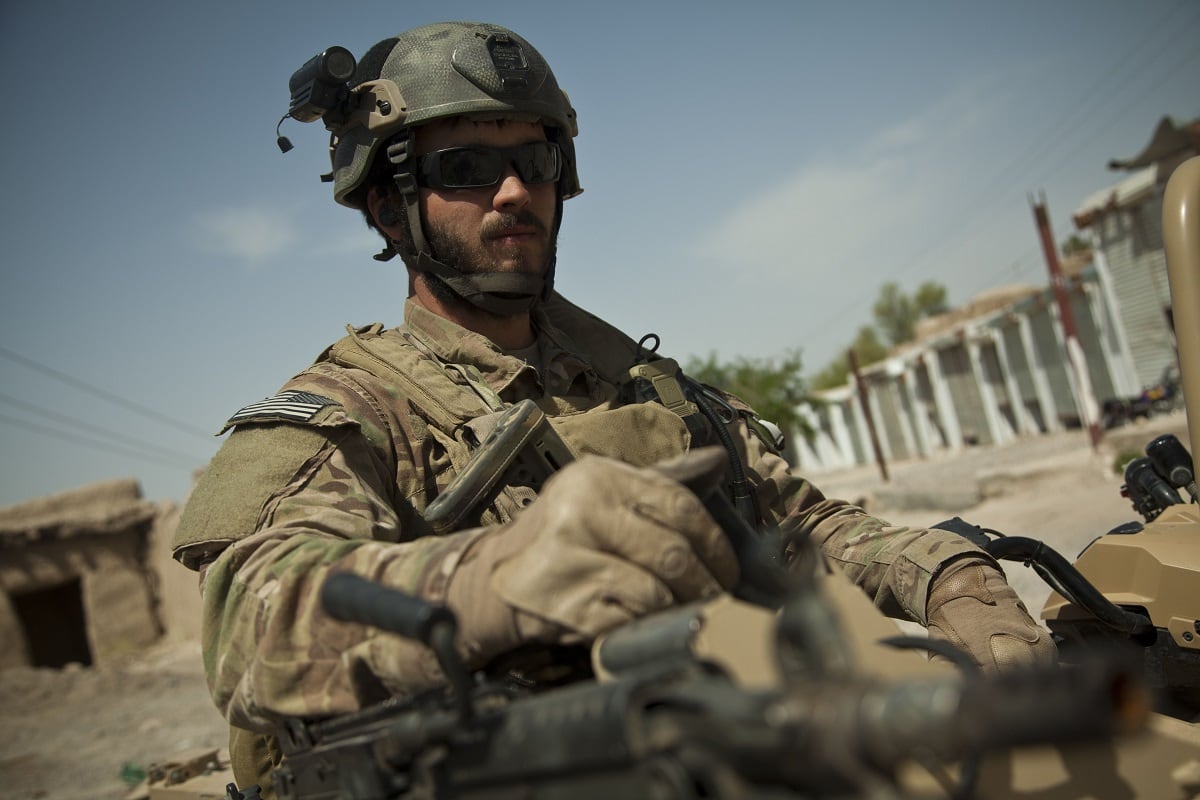Heathenry is experiencing a resurgence.
The polytheistic religion, one that traces its origin to Norse myths that tell of the universe’s creation and prophesy its destructive end, was at one time stifled following the end of the Viking Age and the subsequent spread of Christianity.
One such collections of myths, “The Prose Edda” — authored by Icelandic historian, poet and politician Snorri Sturluson sometime around the year 1220 — provides much of what the modern world knows about Norse mythology: Yggdrasil, Asgard and the Aesir, a tribe of gods and goddesses with familiar names like Odin, Thor, Loki, Frigg and Idun.
Now, nearly 800 years after Sturluson’s “Edda,” a small group of sailors aboard the aircraft carrier John C. Stennis has adopted these deities as the pillars of their religion, according to a Navy release.
The chapel onboard Stennis is where Aviation Electrician’s Mate 2nd Class Joshua Wood, a once-Roman Catholic sailor from Eagle River, Alaska, fills the duties of Heathenry lay leader, a position of religious leadership that must be appointed by a unit’s commanding officer.
As the most senior practitioner of Heathenry — he has been observant for five years now — Wood is tasked with leading a small group of sailors devoted to the Norse gods and goddesses in weekly services that are even advertised on the ship’s one-main circuit.
‘OPENED MY EYES’
Wood was just in high school when he enrolled in a mythology class that he says “opened my eyes to the Nordic Gods."
From there, he examined the famous Eddas, like Sturluson’s, to learn more, eventually coming to the realization that he identified with the polytheistic faith in a way he never had with Catholicism.
RELATED

It didn’t take long before the sailor discovered a group of like-minded Heathens in his hometown of San Diego, one that helped cement his perception of his newfound faith and his place in its community.
“They are my surrogate family,” Wood said in the release. “They helped me understand the religion, and with their help, I transitioned from someone who was merely interested in the religion to someone who is well-versed enough to lead others in prayer. I went through them to get certified to lead services on the ship.”
With his acquired knowledge, Wood has encouraged other sailors with inquisitiveness of Heathenry to attend a sumbel, a ceremony traditionally consisting of toasting and reciting poems or songs.
Aviation Electronics Technician Airman Joshua Shaikoski attended one of these ceremonies led by Wood.
“Just like Wood, I was not born a Heathen,” said Shaikoski, who was born in Norway and raised in Minnesota. “I went to Lutheran services with my parents when I was growing up, but it always felt forced. I never felt like I connected with anything spiritual until I visited Norway and discovered a group of Heathens who opened my eyes to their religion.”
Despite their newfound religious clarity, much of what Heathens like Wood and Shaikoski observe remains a mystery to those on the periphery of the faith’s beliefs and practices.
Rumors surround the religion and its followers — like Shaikoski, who said he’s fielded inquiries about everything from whether they perform ritualistic animal sacrifices to whether they’re racial supremacists.
“Not only is it the farthest from the truth, but it is hurtful,” he said.
No matter the chasmic disconnect between Heathenry followers and those oblivious to its tenets, there is no denying that the religion has gained a foothold — however small — in the U.S. military.
Just last April, a soldier from the 795th Military Police Battalion was granted an accommodation to grow facial hair as part of his pagan faith.
“In observance of your Heathen, Norse Pagan faith, you may wear a beard, in accordance with Army uniform and grooming standards for soldiers with approved religious accommodations,” the soldier’s commander, Col. Curtis Shroeder, wrote in the memo approving the soldier’s request.

And in 2013, the image of Mjölnir, commonly known as the Hammer of Thor, was added to the list of symbols that can be used on veteran headstones, such as those at Arlington National Cemetery.
Such strides of religious freedoms should help dispel outlandish myths like those disputed by Shaikoski.
“Heathenry is a religion of peace and community,” he said. “[It] helped me connect with people on the ship that I would have just passed by.”
J.D. Simkins is the executive editor of Military Times and Defense News, and a Marine Corps veteran of the Iraq War.




